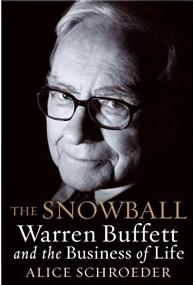
Zeshu Financial Group
5807 S Garnett Rd Suite I
Tulsa, Oklahoma 74146
Toll Free 1-877-205-7266 | Fax: 918-459-6535
Gain Easy Access To The Best Local Mortgage Rates Today With ZFG:
Enjoy easy access to up to the moment rates from lenders serving your local community and surroundings. Participating lenders have been screened for quality assurance, and have pledged affirmation of customer satisfaction.
ZFG Mortgage is an independent mortgage broker committed to helping Tulsans find the very best loan products for your needs. We provide Tulsa mortgages, Tulsa loans and mortgages, and the lowest mortgage rates in Tulsa Metro area and all of the state of Oklahoma.
With nearly a decade of experience, we’ve earned an incredible reputation for being the fastest and most honest Tulsa mortgage company in the area. With our vast knowledge and (nearly-excessive) versatility, we will find you the best value loan products. To meet our client’s unique needs, including purchase loans, home equity loans, and loan refinancing we have developed the infrastructure to make sure that you do not have to wait on hold and that you can always quickly speak with a human when you call our offices. Our success has been built on exceeding our customers expectations.
ZFG mortgage is committed to giving you the fastest, the highest-quality service. We’re also here to help you understand your mortgage options so that you feel confident and informed during your buying or refinancing process. ZFG Mortgage Tulsa is a local mortgage company that you can count on to supply you with sound advice and a loan product that you can feel comfortable with for the time you plan to own your home.

http://www.youtube.com/watch?v=G2-LxaxyF9E
Fixed Rate Mortgages
The most common type of mortgage program where your monthly payments for interest and principal never change. Property taxes and homeowners insurance may increase, but generally your monthly payments will be very stable.
Fixed-rate mortgages are available for 30 years, 20 years, 15 years and even 10 years. There are also “bi-weekly” mortgages, which shorten the loan by calling for half the monthly payment every two weeks. (Since there are 52 weeks in a year, you make 26 payments, or 13 “months” worth, every year.)
Fixed rate fully amortizing loans have two distinct features. First, the interest rate remains fixed for the life of the loan. Secondly, the payments remain level for the life of the loan and are structured to repay the loan at the end of the loan term. The most common fixed rate loans are 15 year and 30 year mortgages.
During the early amortization period, a large percentage of the monthly payment is used for paying the interest . As the loan is paid down, more of the monthly payment is applied to principal . A typical 30 year fixed rate mortgage takes 22.5 years of level payments to pay half of the original loan amount.
Adjustable Rate Mortgages (ARM)
These loans generally begin with an interest rate that is 2-3 percent below a comparable fixed rate mortgage, and could allow you to buy a more expensive home.
However, the interest rate changes at specified intervals (for example, every year) depending on changing market conditions; if interest rates go up, your monthly mortgage payment will go up, too. However, if rates go down, your mortgage payment will drop also.
There are also mortgages that combine aspects of fixed and adjustable rate mortgages – starting at a low fixed-rate for seven to ten years, for example, then adjusting to market conditions. Ask your mortgage professional about these and other special kinds of mortgages that fit your specific financial situation
Standard ARMS and the Differences
A few options are available to fit your individual needs and your risk tolerance with the various market instruments.
ARMs with different indexes are available for both purchases and refinances. Choosing an ARM with an index that reacts quickly lets you take full advantage of falling interest rates. An index that lags behind the market lets you take advantage of lower rates after market rates have started to adjust upward.
The interest rate and monthly payment can change based on adjustments to the index rate.
6-Month Certificate of Deposit (CD) ARM
Has a maximum interest rate adjustment of 1% every six months. The 6-month Certificate of Deposit (CD) index is generally considered to react quickly to changes in the market. 1-Year Treasury Spot ARM
Has a maximum interest rate adjustment of 2% every 12 months. The 1-Year Treasury Spot index generally reacts more slowly than the CD index, but more quickly than the Treasury Average index. 6-Month Treasury Average ARM
Has a maximum interest rate adjustment of 1% every six months. The Treasury Average index generally reacts more slowly in fluctuating markets so adjustments in the ARM interest rate will lag behind some other market indicators. 12-Month Treasury Average ARM
Has a maximum interest rate adjustment of 2% every 12 months. The treasury Average index generally reacts more slowly in fluctuating markets so adjustments in the ARM interest rate will lag behind some other market indicators. Introductory Rate ARM’s
Most adjustable rate loans (ARMs) have a low introductory rate or start rate, some times as much as 5.0% below the current market rate of a fixed loan. This start rate is usually good from 1 month to as long as 10 years. As a rule the lower the start rate the shorter the time before the loan makes its first adjustment.
Index
– The index of an ARM is the financial instrument that the loan is “tied” to, or adjusted to. The most common indices, or, indexes are the 1-Year Treasury Security, LIBOR (London Interbank Offered Rate), Prime, 6-Month Certificate of Deposit (CD) and the 11th District Cost of Funds (COFI). Each of these indices move up or down based on conditions of the financial markets. Margin
– The margin is one of the most important aspects of ARMs because it is added to the index to determine the interest rate that you pay. The margin added to the index is known as the fully indexed rate. As an example if the current index value is 5.50% and your loan has a margin of 2.5%, your fully indexed rate is 8.00%. Margins on loans range from 1.75% to 3.5% depending on the index and the amount financed in relation to the property value. Interim Caps
– All adjustable rate loans carry interim caps. Many ARMs have interest rate caps of six-months or a year. There are loans that have interest rate caps of three years. Interest rate caps are beneficial in rising interest rate markets, but can also keep your interest rate higher than the fully indexed rate if rates are falling rapidly. Payment Caps
– Some loans have payment caps instead of interest rate caps. These loans reduce payment shock in a rising interest rate market, but can also lead to deferred interest or “negative amortization”. These loans generally cap your annual payment increases to 7.5% of the previous payment. Lifetime Caps
– Almost all ARMs have a maximum interest rate or lifetime interest rate cap. The lifetime cap varies from company to company and loan to loan. Loans with low lifetime caps usually have higher margins, and the reverse is also true. Those loans that carry low margins often have higher lifetime caps. Reverse Mortgages
A reverse mortgage is a special type of loan made to older homeowners (typically 62 +) to enable them to convert the equity in their home to cash to finance living expenses, home improvements, in-home health care, or other needs.
With a reverse mortgage, the payment stream is “reversed.” That is, payments are made by the lender to the borrower, rather than monthly repayments by the borrower to the lender, as occurs with a regular home purchase mortgage.
A reverse mortgage is a sophisticated financial planning tool that enables seniors to stay in their home — or “age in place” — and maintain or improve their standard of living without taking on a monthly mortgage payment. The process of obtaining a reverse mortgage involves a number of different steps.
The first, most widely available reverse mortgage in the United States was the federally-insured Home Equity Conversion Mortgage (HECM), which was authorized in 1987.
A reverse mortgage is different from a home equity loan or line of credit, which many banks and thrifts offer. With a home equity loan or line of credit, an applicant must meet certain income and credit requirements, begin monthly repayments immediately, and the home can have an existing first mortgage on it. In addition, there is no restriction on the age of borrowers.
In general, reverse mortgages are limited to borrowers 62 years or older who own their home free and clear of debt or nearly so, and the home is free of tax liens.
Borrowers usually have a choice of receiving the proceeds from a reverse mortgage in the form of a lump-sum payment, fixed monthly payments for life, or line of credit. Some types of reverse mortgages also allow fixed monthly payments for a finite time period, or a combination of monthly payments and line of credit. The interest rate charged on a reverse mortgage is usually an adjustable rate that changes monthly or yearly. However, the size of monthly payments received by the senior doesn’t change.
Some reverse mortgage products also involve the purchase of an annuity that can assure continued monthly income to the senior homeowner even after they sell the home.
The size of reverse mortgage that a senior homeowner can receive depends on the type of reverse mortgage, the borrower’s age and current interest rates, and the home’s property value. The older the applicant is, the larger the monthly payments or line of credit. This is because of the use of projected life expectancies in determining the size of reverse mortgages.
Seniors do not have to meet income or credit requirements to qualify for a reverse mortgage.
Unlike a home purchase mortgage or home equity loan, a reverse mortgage doesn’t require monthly repayments by the borrower to the lender. A reverse mortgage isn’t repayable until the borrower no longer occupies the home as his or her principal residence.
This can occur if the sole remaining borrower dies, the borrower sells the home, or the borrower moves out of the home, say, to a nursing home.
The repayment obligation for a reverse mortgage is equal to the principal balance of the loan, plus accrued interest, plus any finance charges paid for through the mortgage. This repayment obligation, however, can’t exceed the value of the home.
The loan may be repaid by the borrower or by the borrower’s family or estate, with or without a sale of the home. If the home is sold and the sale proceeds exceed the repayment obligation, the excess funds go to the borrower or borrower’s estate. If the sales proceeds are less than the amount owed, the shortfall is usually covered by insurance or some other party and is not the responsibility of the borrower or borrower’s estate. In general, the repayment obligation of the borrower or borrower’s estate can’t exceed the value of the property.
In general, a borrower can’t be forced to sell their home to repay a reverse mortgage as long as they occupy the home, even if the total of the monthly payments to the borrower exceeds the value of the home.
London InterBank Offered Rate (LIBOR)
LIBOR is the rate on dollar-denominated deposits, also know as Eurodollars, traded between banks in London. The index is quoted for one month, three months, six months as well as one-year periods.
LIBOR is the base interest rate paid on deposits between banks in the Eurodollar market. A Eurodollar is a dollar deposited in a bank in a country where the currency is not the dollar. The Eurodollar market has been around for over 40 years and is a major component of the International financial market. London is the center of the Euromarket in terms of volume.
The LIBOR rate quoted in the Wall Street Journal is an average of rate quotes from five major banks. Bank of America, Barclays, Bank of Tokyo, Deutsche Bank and Swiss Bank.
The most common quote for mortgages is the 6-month quote. LIBOR’s cost of money is a widely monitored international interest rate indicator. LIBOR is currently being used by both Fannie Mae and Freddie Mac as an index on the loans they purchase.
LIBOR is quoted daily in the Wall Street Journal’s Money Rates and compares most closely to the 1-Year Treasury Security index.
Balloon Mortgages
Balloon loans are short term mortgages that have some features of a fixed rate mortgage. The loans provide a level payment feature during the term of the loan, but as opposed to the 30 year fixed rate mortgage, balloon loans do not fully amortize over the original term. Balloon loans can have many types of maturities, but most balloons that are first mortgages have a term of 5 to 7 years.
At the end of the loan term there is still a remaining principal loan balance and the mortgage company generally requires that the loan be paid in full, which can be accomplished by refinancing. Many companies have other options such as a conversion feature at the end of the term. For example, the loan may convert to a 30 year fixed loan at the thirty year market rate plus 3/8 of a percentage point. Your conversion can be guaranteed based on certain criteria such as having made your last 24 payments on time. The balloon mortgage program with the conversion option is often called a 7/23 Convertible or 5/25 Convertible.
Interest Rate Buydowns
The most common buydown is the 2-1 buydown. In the past, for a buyer to secure a 2-1 buydown they would pay 3 points above current market points in order to pay a below market interest rate during the first two years of the loan. At the end of the two years they would then pay the old market rate for the remaining term.
As an example, if the current market rate for a conforming fixed rate loan is 8.5% at a cost of 1.5 points, the buydown gives the borrower a first year rate of 6.50%, a second year rate of 7.50% and a third through 30th year rate of 8.50% and the cost would be 4.5 points. Buydown were usually paid for by a transferring company because of the high points associated with them.
In today’s market, mortgage companies have designed variations of the old buydowns rather than charge higher points to the buyer in the beginning they increase the note rate to cover their yields in the later years.
As an example, if the current rate for a conforming fixed rate loan is 8.50% at a cost of 1.5 points, the buydown would give the buyer a first year rate of 7.25%, a second year rate of 8.25% and a third through 30th year rate of 9.25% , or a three-quarter point higher note rate than the current market and the cost would remain at 1.5 points.
Another common buydown is the 3-2-1 buydown which works much in the same ways as the 2-1 buydown, with the exception of the starting interest rate being 3% below the note rate. Another variation is the flex-fixed buydown programs that increase at six month interval rather than annual intervals.
As an example, for a flex-fixed jumbo buydown at a cost of 1.5 points, the first six months rate would be 7.50%, the second six months the rate would be 8.00%, the next six months rate would be 8.50%, the next six months rate would be 9.00%, the next six months the rate would be 9.50% and at the 37th month the rate would reach the note rate of 9.875% and would remain there for the remainder of the term. A comparable jumbo 30 year fixed at 1.5 points would be 8.8Cost of Funds Index (COFI)
The 11th District Cost of Funds is more prevalent in the West and the 1-Year Treasury Security is more prevalent in the East. Buyers prefer the slowly moving 11th District Cost of Funds and investors prefer the 1-Year Treasury Security.
The monthly weighted average Eleventh District has been published by the Federal Home Loan Bank of San Francisco since August 1981. Currently more than one half of the savings institutions loans made in California are tied to the 11th District Cost of Funds (COF) index.
The Federal Home Loan Bank’s 11th District is comprised of saving institutions in Arizona, California and Nevada.
Few people who use and follow the 11th District Cost of Funds understand exactly how it is calculated, what it represents, how it moves and what factors affect it.
The predecessor to the 11th District Cost of Funds index was the District semiannual weighted average cost of funds published for a six month period ending in June and December. The San Francisco Bank was the first Federal Home Loan Bank to publish a monthly cost of funds index.
The funds used as a basis for the calculation of the 11th District Cost of Funds index are the liabilities at the District savings institutions: money on deposit at the institutions, money borrowed from a Federal Home Loan Bank (known as advances) and all other money borrowed. The interest paid on these types of funds is the cost of these funds.
The ratio of the dollar amount paid in interest during the month to the average dollar amount of the funds for that month constitutes the weighted average cost of funds ratio for that month.
The average cost of funds is said to be weighted because the three kinds of funds and their costs are added together before a ratio is computed rather than calculating averages individually for the three sources and using a simple average of the three ratios. This gives the greatest weight to the interest paid on deposits, and explains the delayed reaction of the index to rising fixed-rate mortgages.
Graduated Payment Mortgage (GPM)
The GPM is another alternative to the conventional adjustable rate mortgage, and is making a comeback as borrowers and mortgage companies seek alternatives to assist in qualify for home financing
Unlike an ARM, GPMs have a fixed note rate and payment schedule. With a GPM the payments are usually fixed for one year at a time. Each year for five years the payments graduate at 7.5% – 12.5% of the previous years payment.
GPMs are available in 30 year and 15 year amortization, and for both conforming and jumbo loans. With the graduated payments and a fixed note rate, GPMs have scheduled negative amortization of approximately 10% – 12% of the loan amount depending on the note rate. The higher the note rate the larger degree of negative amortization. This compares to the possible negative amortization of a monthly adjusting ARM of 10% of the loan amount. Both loans give the consumer the ability to pay the additional principal and avoid the negative amortization. In contrast, the GPM has a fixed payment schedule so the additional principal payments reduce the term of the loan. The ARMs additional payments avoid the negative amortization and the payments decrease while the term of the loan remains constant.
The scheduled negative amortization on a GPM differs depending on the amortization schedule, the note rate and the payment increases of the loan. GPM loans with 7.5% annual payment increases offer the lowest qualifying rate but the largest amount of negative amortization.
On a loan of $150,000, with a 30 year amortization and a note rate of 10.50% with 12.5% annual payment increases, the negative amortization continues for 60 months. The qualifying rate is 5.75% and the negative amortization is 11.34% (approximately $17,010).
The note rate of a GPM is traditionally .5% to .75% higher than the note rate of a straight fixed rate mortgage. The higher note rate and scheduled negative amortization of the GPM makes the cost of the mortgage more expensive to the borrower in the long run. In addition, the borrowers monthly payment can increase by as much as 50% by the final payment adjustment.
The lower qualifying rate of the GPM can help borrowers maximize their purchasing power, and can be useful in a market with rapid appreciation. In markets where appreciation is moderate, and a borrower needs to move during the scheduled negative amortization period they could create an unpleasant situation.
75%.
Choosing A Mortgage Program
There isn’t a single or simple answer to this question. The right type of mortgage for you depends on many different factors:
- Your current financial picture.
- How you expect your finances to change.
- How long you intend to keep your house.
- How comfortable you are with your mortgage payment changing.
For example, a 15-year fixed-rate mortgage can save you many thousands of dollars in interest payments over the life of the loan, but your monthly payments will be higher. An adjustable rate mortgage may get you started with a lower monthly payment than a fixed-rate mortgage — but your payments could get higher when the interest rate changes.
The best way to find the “right” answer is to discuss your finances, your plans and financial prospects, and your preferences frankly with a mortgage professional.
To better help incredible customers (such as you) to better reach our website we have put together the following list of mortgage related terms, verbage and what-not:
search for home listings, zfg mortgage tulsa, realtors in Oklahoma, tulsa mortgage lending companies, tulsa mortgage lenders
mortgage quoter, mortgage calculator, fixed mortgages tulsa,tulsa mortgage companies in the area, mortgage companies,
zfg home loan refinancing, home mortgage lenders, oklahoma balloon mortgages, 100% financing home loans, home loans 100% financing, RD loans, commercial loans, 30 year fixed rate loans, refinance tulsa mortgage loans,mls listings, tulsa mortgage companies, mortgage companies in tulsa, zfg mortgage brokers, mortgage brokers in the tulsa area, mortgage broker establishments, tulsa banks, banks in tulsa, refinancing in tulsa, tulsa refinance, zfg mortgage refinancing, refinance your tulsa ARM loan, refinance your ARM loan, ARM loan refinance










 http://www.youtube.com/watch?v=5y7V5trYmik
http://www.youtube.com/watch?v=5y7V5trYmik